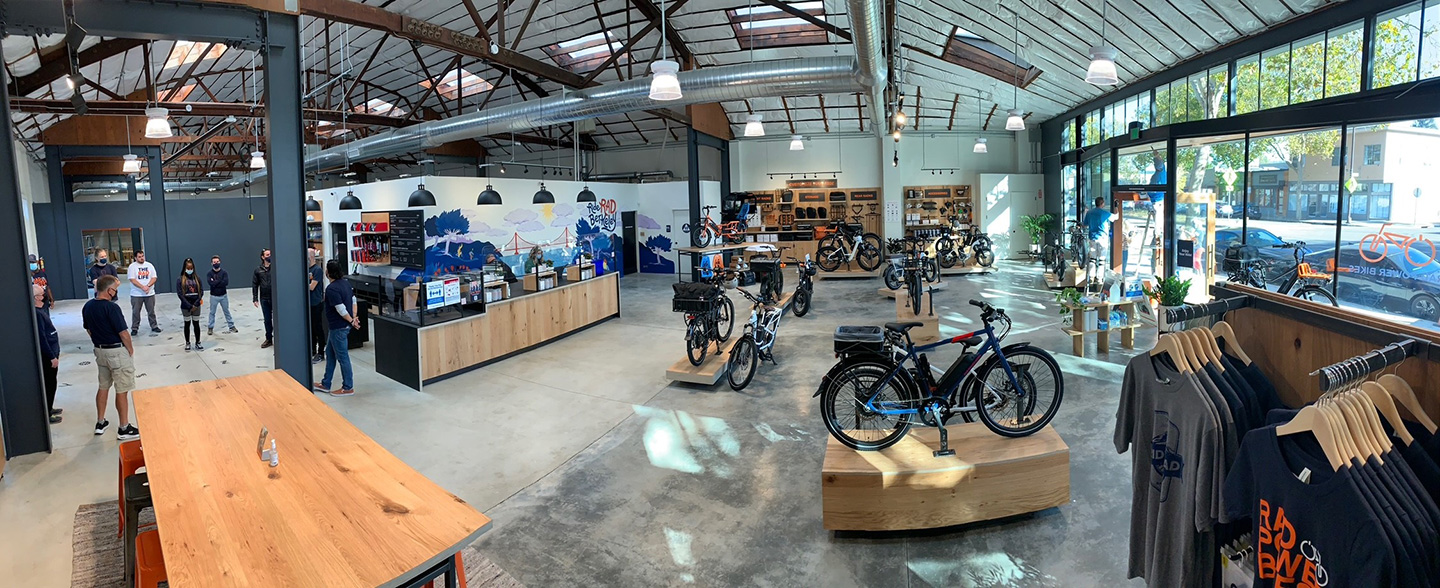Retail has to be worth it. How can design and construction teams work collaboratively to deliver on this simple goal?
With defined brand design standards and rigorous construction schedules, brick-and-mortar retail store development can present unique challenges. Success is often defined by the ability to get the right materials and equipment at the right time. With constant supply chain and procurement challenges, this is increasingly difficult to deliver on. Early contractor engagement, constant design collaboration, and risk mitigation planning is critical to a project’s success. Now, more than ever, retail clients are looking for collaborative teams, with input from design and construction, to help plan for these issues and expect the unexpected. So, how can project teams simultaneously deliver on both brand and schedule?
 Grand opening of RAD Power Bikes in Berkley, California.
Grand opening of RAD Power Bikes in Berkley, California.
Benefits of a Proactive Delivery Approach
Our team uses a proactive design and construction process that has helped to mitigate supply chain challenges and build confidence in the client that what they have envisioned in the design will be delivered in construction. We focus on the design and construction team working collaboratively early on in a project life cycle to source new materials and identify potential reusable and repurposed materials.
Keys to Success
- Bring the construction team onboard early in the design process
Speed to market is critical to the success of retail design delivery. The project life cycle—from site identification to grand opening—can be less than 12 months. Bringing the construction team onboard early in the design phase of the project helps to build long-term relationships with the larger team, including architecture, construction, and client. Projects benefit tremendously from a shared vision of priorities and needs. This approach can help to build confidence with the client and align everyone on the expected outcomes.
- Meet regularly, get everyone on the same wavelength
Everyone needs a seat at the table. Our team hosts weekly calls, both internally and with our clients, to identify challenges, review schedules, and prioritize needs. This helps prevent gaps in communication and offers different perspectives that can be crucial to finding the best solution to an issue on a project.
- Expertise needed
With both design and construction engaged in project development from the start, the team can better support all aspects of the project life cycle—from site selection, deal terms, coordination with landlords, cities and property managers, design, procurement, and budgeting. It allows clients to focus on what they do best, and delegates some project development expertise to the larger team, often allowing each individual to bring the right expertise to the project at the right time.
- Consider making the project a design-led design-build
A construction-led design-build project may meet schedule and budget, but may fall short in meeting the client’s expectation for design. Our goal is to wow clients. Therefore, early collaboration between design and construction allows for early alignment on materials, finishes, and branding opportunities—so they can be procured within the project schedule.
- Have a contract mechanism in place that makes sense for all parties involved
When the client understands all that they have agreed to in the contract up front, it gives them the ability to procure materials and equipment early. This extra time can be used to develop partners to source critical materials which can be crucial, particularly for long lead items or foundational design elements.
- Use technology where it can benefit the team
Technology has helped us speed up our projects in numerous ways—from using Revit and virtual reality (VR) to help our clients visualize projects, to using virtual meeting software to get teams on the same page and approvals pushed through, to using translation programs to help where any language barriers in documentation may exist.
Ultimately, by bringing the construction team on early in the project life cycle and following best practices, retail project teams can help mitigate risk, deliver great design, and manage cost and schedules. That’s what we call a win-win-win!